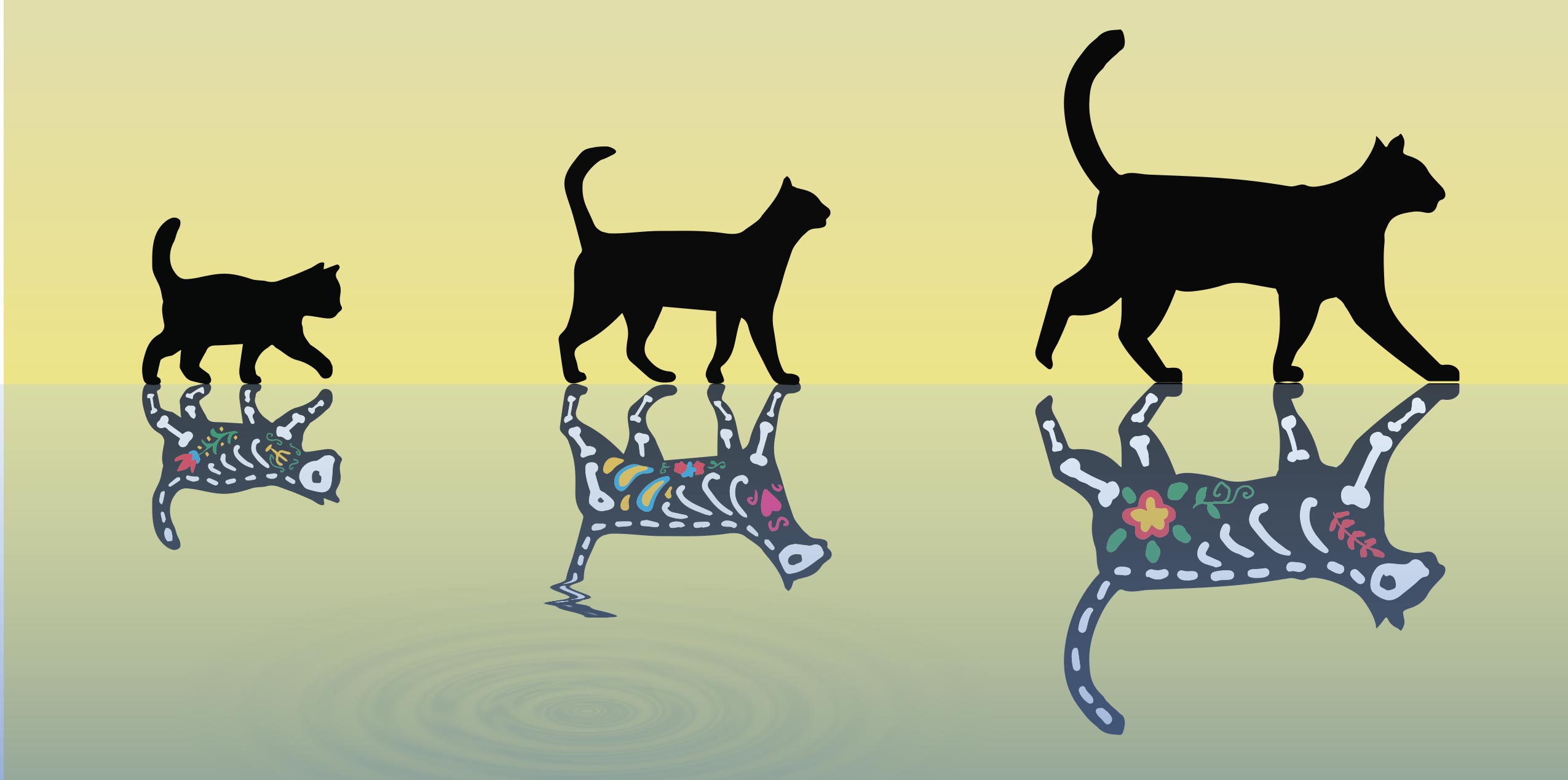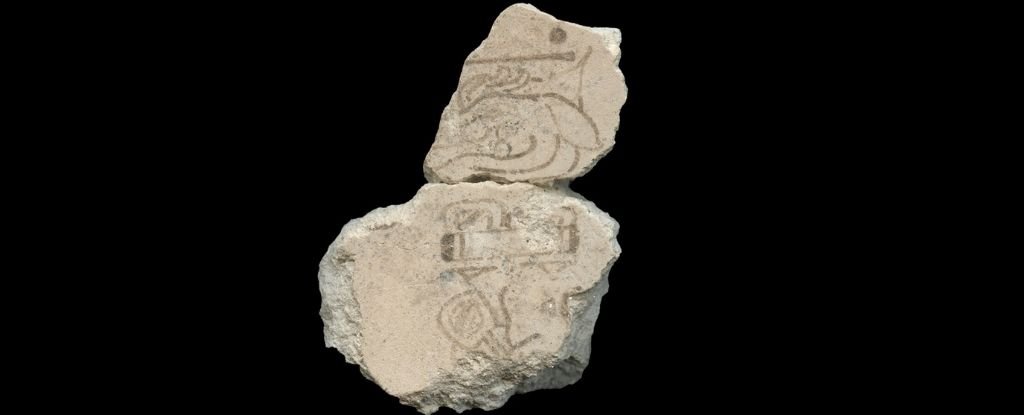
Los científicos de ETH Zurich han logrado avances en la cría de gatos Schrödinger más pesados, que pueden estar vivos (arriba) y muertos (abajo) al mismo tiempo. Crédito: Yiwen Chu / ETH Zúrich
Investigadores de ETH Zurich crearon el gato de Schrödinger más pesado hasta la fecha colocando un cristal en una superposición de dos estados de oscilación. Sus resultados podrían conducir a bits cuánticos más robustos y ayudar a explicar por qué las superposiciones cuánticas no se observan en la vida cotidiana.
- Investigadores de ETH Zurich han creado el gato Schrödinger más pesado hasta la fecha.
- Para ello, combinaron un cristal oscilante con un circuito superconductor.
- Esperan comprender mejor la razón detrás de la desaparición de los efectos cuánticos en el mundo macroscópico.
Incluso si no eres un físico cuántico, probablemente hayas oído hablar del famoso gato de Schrödinger. Erwin Schrödinger ideó el felino que puede estar vivo y muerto al mismo tiempo en un experimento mental en 1935. La contradicción obvia: después de todo, en la vida cotidiana solo vemos gatos que están vivos. o muertos- llevó a los científicos a intentar llevar a cabo situaciones análogas en el laboratorio. Hasta ahora, han logrado hacer esto utilizando, por ejemplo, átomos o moléculas en estados de superposición cuántica de estar en dos lugares a la vez.
En ETH, un equipo de investigadores dirigido por Yiwen Chu, profesor del Laboratorio de Física del Estado Sólido, ha creado un gato de Schrödinger sustancialmente más pesado al colocar un pequeño cristal en una superposición de dos estados de oscilación. Sus resultados, publicados esta semana en Science, podrían conducir a bits cuánticos más robustos y arrojar luz sobre el misterio de por qué las superposiciones cuánticas no se observan en el mundo macroscópico.
gato en una caja
En el experimento mental original de Schrödinger, un gato está encerrado dentro de una caja de metal junto con una sustancia radiactiva, un contador Geiger y un frasco de veneno. En un período de tiempo dado, una hora, digamos, un[{» attribute=»»>atom in the substance may or may not decay through a quantum mechanical process with a certain probability, and the decay products might cause the Geiger counter to go off and trigger a mechanism that smashes the flask containing the poison, which would eventually kill the cat. Since an outside observer cannot know whether an atom has actually decayed, he or she also doesn’t know whether the cat is alive or dead – according to quantum mechanics, which governs the decay of the atom, it should be in an alive/dead superposition state. (Schrödinger’s idea is commemorated by a life-size cat figure outside his former home at Huttenstrasse 9 in Zurich).

In the ETH Zurich experiment, the cat is represented by oscillations in a crystal (top and blow-up on the left), whereas the decaying atom is emulated by a superconducting circuit (bottom) coupled to the crystal. Credit: Yiwen Chu / ETH Zurich
“Of course, in the lab we can’t realize such an experiment with an actual cat weighing several kilograms,” says Chu. Instead, she and her co-workers managed to create a so-called cat state using an oscillating crystal, which represents the cat, with a superconducting circuit representing the original atom. That circuit is essentially a quantum bit or qubit that can take on the logical states “0” or “1” or a superposition of both states, “0+1”. The link between the qubit and the crystal “cat” is not a Geiger counter and poison, but rather a layer of piezoelectric material that creates an electric field when the crystal changes shape while oscillating. That electric field can be coupled to the electric field of the qubit, and hence the superposition state of the qubit can be transferred to the crystal.
Simultaneous oscillations in opposite directions
As a result, the crystal can now oscillate in two directions at the same time – up/down and down/up, for instance. Those two directions represent the “alive” or “dead” states of the cat. “By putting the two oscillation states of the crystal in a superposition, we have effectively created a Schrödinger cat weighing 16 micrograms,” explains Chu. That is roughly the mass of a fine grain of sand and nowhere near that of a cat, but still several billion times heavier than an atom or molecule, making it the fattest quantum cat to date.
In order for the oscillation states to be true cat states, it is important that they be macroscopically distinguishable. This means that the separation of the “up” and “down” states should be larger than any thermal or quantum fluctuations of the positions of the atoms inside the crystal. Chu and her colleagues checked this by measuring the spatial separation of the two states using the superconducting qubit. Even though the measured separation was only a billionth of a billionth of a meter – smaller than an atom, in fact – it was large enough to clearly distinguish the states.
Measuring small disturbances with cat states
In the future, Chu would like to push the mass limits of her crystal cats even further. “This is interesting because it will allow us to better understand the reason behind the disappearance of quantum effects in the macroscopic world of real cats,” she says. Beyond this rather academic interest, there are also potential applications in quantum technologies. For instance, quantum information stored in qubits could be made more robust by using cat states made up of a huge number of atoms in a crystal rather than relying on single atoms or ions, as is currently done. Also, the extreme sensitivity of massive objects in superposition states to external noise could be exploited for precise measurements of tiny disturbances such as gravitational waves or for detecting dark matter.
Reference: “Schrödinger cat states of a 16-microgram mechanical oscillator” by Marius Bild, Matteo Fadel, Yu Yang, Uwe von Lüpke, Phillip Martin, Alessandro Bruno and Yiwen Chu, 20 April 2023, Science.
DOI: 10.1126/science.adf7553

«Creador malvado. Estudiante. Jugador apasionado. Nerd incondicional de las redes sociales. Adicto a la música».





